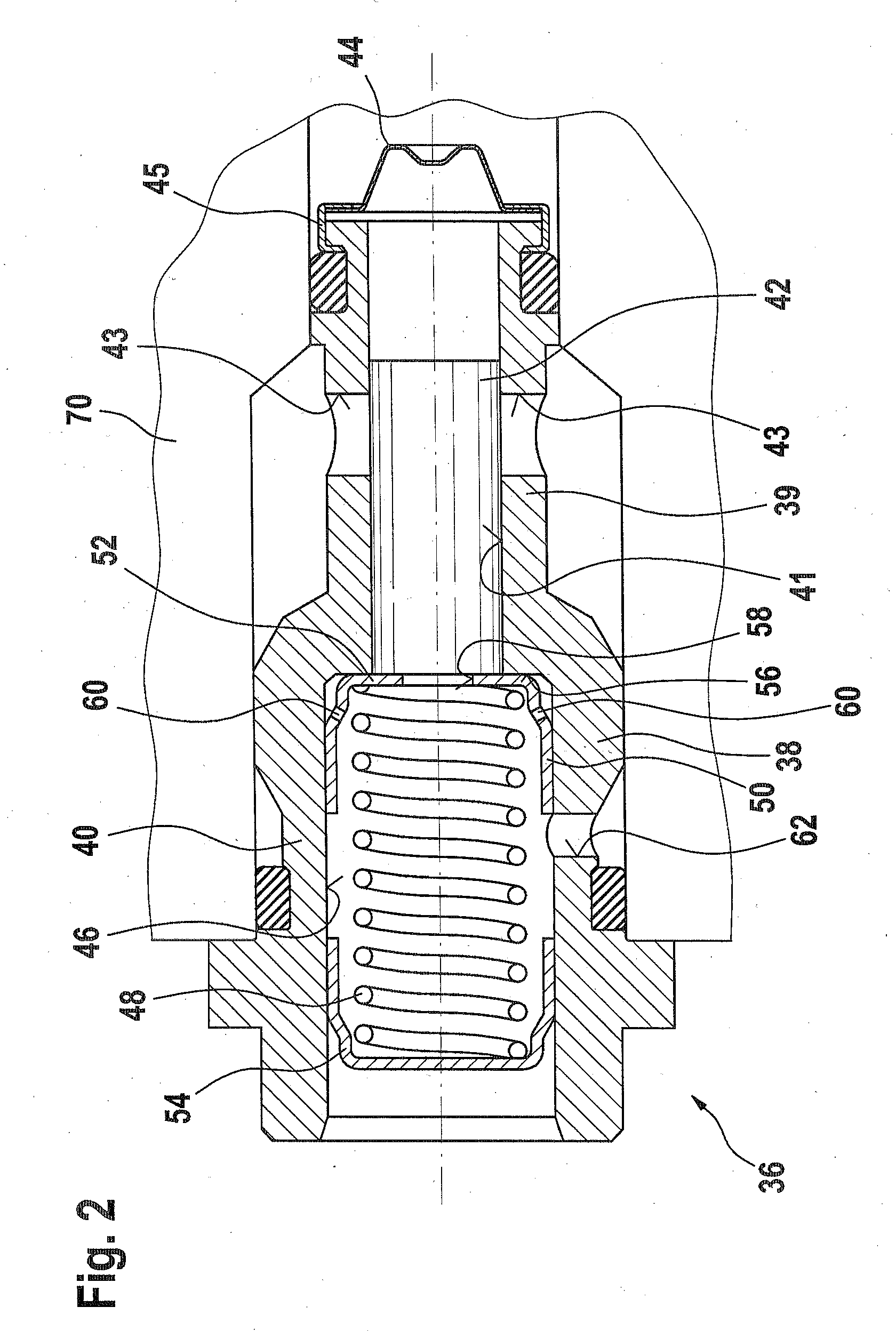Fuel overflow valve for a fuel injection system, and fuel injection system having a fuel overflow valve
- Summary
- Abstract
- Description
- Claims
- Application Information
AI Technical Summary
Benefits of technology
Problems solved by technology
Method used
Image
Examples
Embodiment Construction
[0011]In FIG. 1, a fuel injection system for an internal combustion engine is shown. The fuel injection system has a feed pump 10, which aspirates fuel from a fuel tank 12 and delivers it to the intake side of a high-pressure pump 14. By the feed pump 10, the fuel is compressed to a delivery pressure of approximately 4 to 6 bar, for example. The feed pump 10 may be driven electrically or mechanically. Between the feed pump 10 and the intake side of the high-pressure pump 14, there can be a fuel metering device 16, by which the quantity of fuel aspirated by the high-pressure pump 14 and delivered at high pressure can be variably adjusted. The fuel metering device 16 may be a proportional valve that is capable of adjusting variously large flow cross sections, or it may be a clocked valve, and it is triggered mechanically or electrically by an electronic control device 17.
[0012]The high-pressure pump 14 has a housing 18, in which in an inner chamber 19 a rotationally driven drive shaft...
PUM
 Login to View More
Login to View More Abstract
Description
Claims
Application Information
 Login to View More
Login to View More - R&D
- Intellectual Property
- Life Sciences
- Materials
- Tech Scout
- Unparalleled Data Quality
- Higher Quality Content
- 60% Fewer Hallucinations
Browse by: Latest US Patents, China's latest patents, Technical Efficacy Thesaurus, Application Domain, Technology Topic, Popular Technical Reports.
© 2025 PatSnap. All rights reserved.Legal|Privacy policy|Modern Slavery Act Transparency Statement|Sitemap|About US| Contact US: help@patsnap.com



